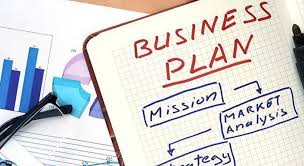Green Conference Rooms: Incorporating Sustainability into Business Meetings


Gone are the days when conference rooms were only used for formal meetings or presentations. Today, conference rooms are becoming an essential part of the modern workplace. They are used for brainstorming sessions, team meetings, video conferencing, and much more. Essentially, conference rooms are the hub of communication and collaboration in any organization. Therefore, it is crucial to design an efficient conference room that caters to the needs of the modern workplace.
In this article, we will explore some of the latest trends and best practices for designing efficient conference rooms for the modern workplace.
Space and Layout:
The first thing to consider when designing a conference room is the space and layout. For a small team room, a rectangular table and chairs will suffice. However, for a large conference room, a more wide and open layout will be necessary. The goal is to create an environment where everyone is comfortable and can communicate without disruption. Therefore, the layout must be flexible enough to accommodate different group sizes and configurations.
Technology:
With the rise of remote workers, video conferencing has become an important part of modern collaboration. Therefore, it is essential to incorporate technology like projectors, screens, televisions, and high-quality video conferencing equipment into the conference room design. Make sure that the technology is easy to use and accessible to everyone. This will make collaboration seamless and efficient.
Lighting and Acoustics:
Lighting and acoustics play a crucial role in conference room design. Natural light is essential for creating a comfortable and productive environment. However, when this is not possible, the use of smart lighting and fixtures that mimic daylight will be necessary. Also, acoustics can make or break a conference room. Use soundproofing materials to eliminate any outside noise and ensure that speakers can be heard clearly and without any distortion.
Ergonomics:
For maximum comfort and productivity, the conference room furniture must be ergonomic. Chairs and tables should be adjustable and designed to reduce fatigue and discomfort during long meetings. Additionally, chairs should swivel to allow people to face each other quickly. Some conference rooms also include comfortable sofas, chairs, and couches, which provide a relaxed and informal setting.
Décor and Design:
The interior design and décor of the conference room must be in line with your brand and corporate culture. Use branded colors, themes, and logos to enhance the ambiance and make the room feel more welcoming and cohesive. Also, include artwork or graphics that inspire creativity and communicate your organizational values. Consider investing in high-quality finishes and materials to make the room feel more luxurious and professional.
Conclusion:
In conclusion, designing an efficient conference room is vital for the success of any modern workplace. A well-designed conference room will help encourage collaboration, creativity, and productivity among all team members. When redesigning or constructing your conference room, it is crucial to consider various factors such as space and layout, technology, lighting and acoustics, ergonomics, and décor and design. By following these best practices, you can design a conference room that is not only functional but also visually appealing and comfortable.







